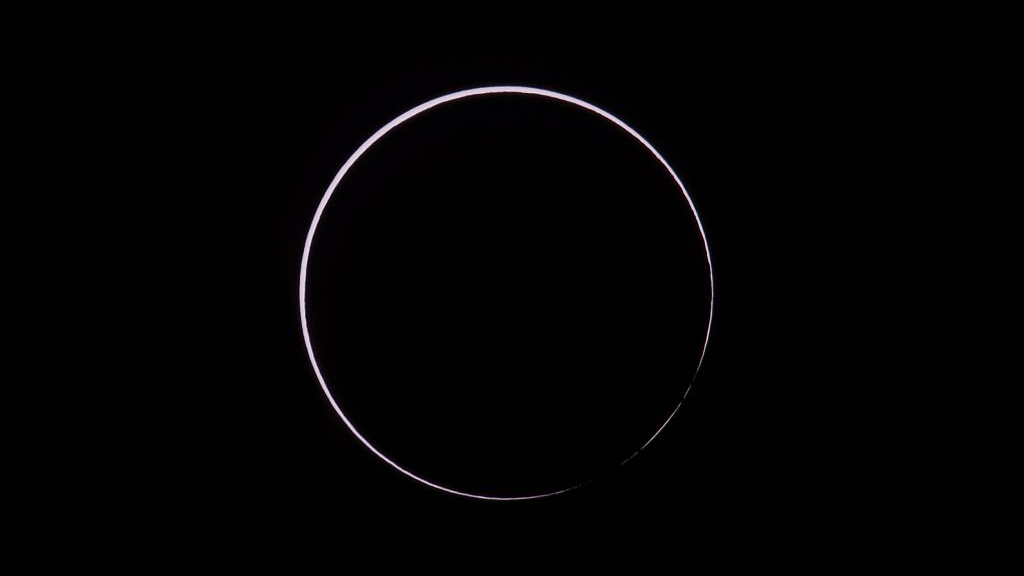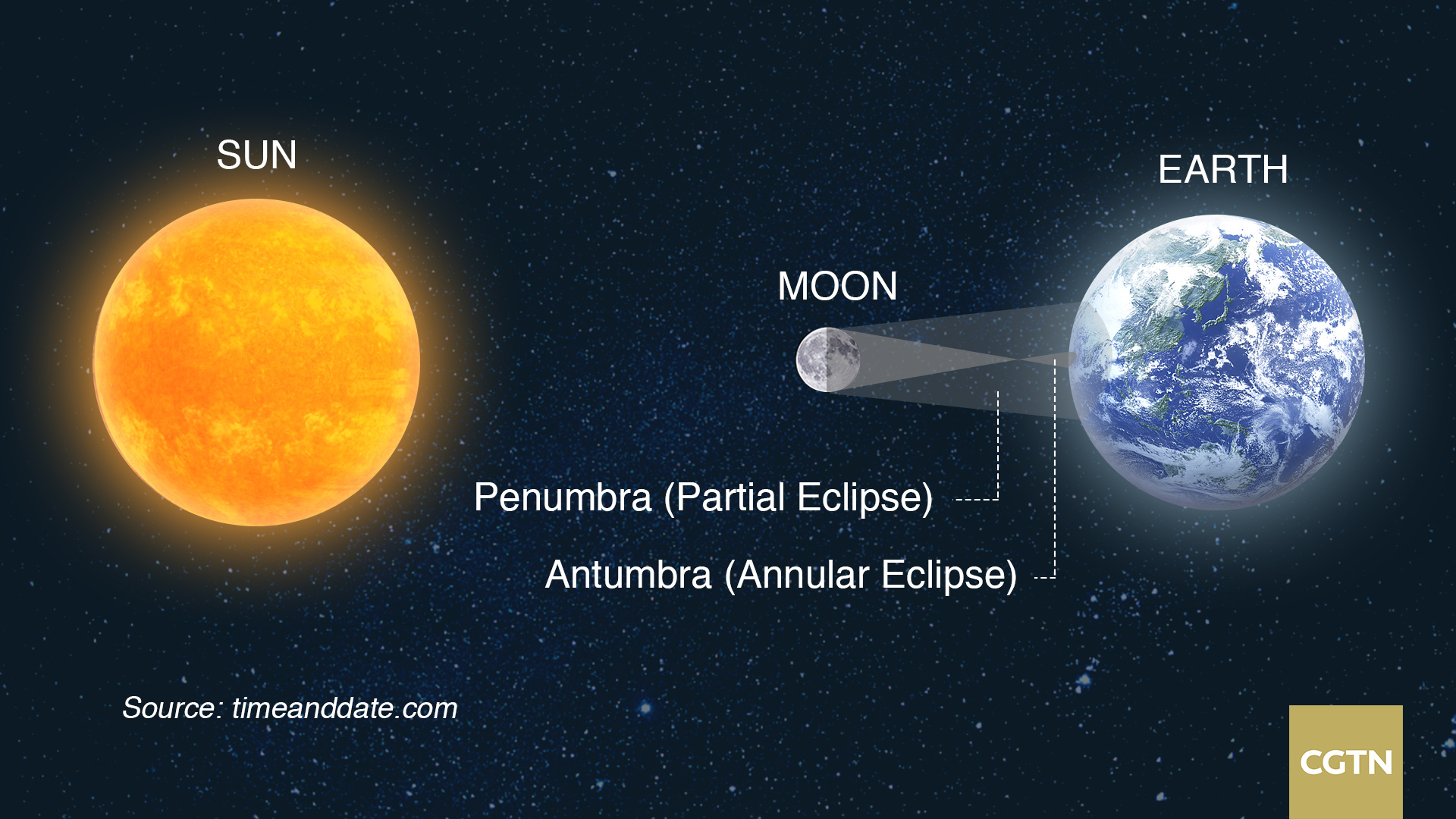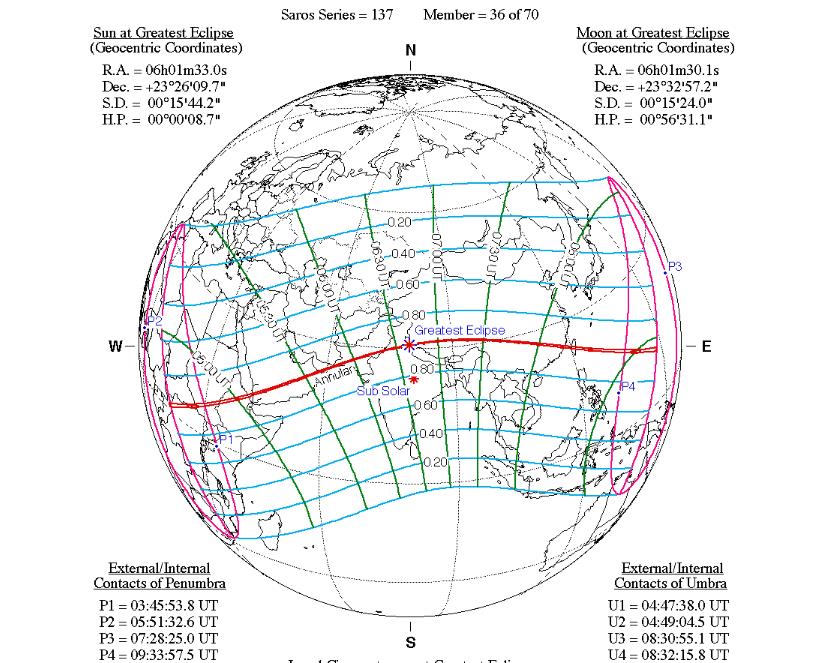
An annular solar eclipse seen in Argentina, February 26, 2017. /VCG
An annular solar eclipse seen in Argentina, February 26, 2017. /VCG
The most anticipated celestial event of the year, an annular solar eclipse, will take place on Sunday in parts of Africa and Asia, according to the Purple Mountain Observatory (PMO) of the Chinese Academy of Sciences.
It coincided with the day of Summer Solstice this year when the Northern Hemisphere sees the longest day and the shortest night of the year.

CGTN Infographic by Du Chenxin
CGTN Infographic by Du Chenxin
A solar eclipse occurs when the Sun, Moon and Earth are aligned with the Moon in between. A total solar eclipse takes place when the Moon completely blocks out the Sun's light, and an annular eclipse happens when the Moon is farthest from Earth as the Moon seems smaller and doesn't block the entire view of the Sun, said NASA.
On Sunday afternoon, BJT, the annular eclipse will stage the sky, said Hu Fanghao, an engineer from PMO.
The Sun's central part will be dark, while the edge remains bright, forming a fiery "golden ring" around the Moon, Hu introduced.
It will be a spectacular event as the maximum eclipse is estimated to be 0.997 – the closer this number is to 1, the closer it is to a total eclipse.
When and where to see it

A visibility map for the annular solar eclipse on June 21. /NASA
A visibility map for the annular solar eclipse on June 21. /NASA
The celestial event will be visible first for the people in the northeastern Republic of Congo at sunrise, passes through Central Africa, South Sudan, Ethiopia, and other regions, and extends eastward to China before ending in the north Pacific Ocean.
The eclipse will start at 11:45 p.m. EST Saturday (0345 Sunday) and end at 5:34 a.m. EST Sunday. The annular eclipse will start at 12:47 EST Sunday, and reach the maximum eclipse at 2:40 a.m. EST Sunday, according to NASA.
For Chinese viewers, people in the regions in Tibet Autonomous Region, Sichuan Province, Chongqing Municipality, Guizhou Province, Hunan Province, Jiangxi Province, Fujian Province and Taiwan will have the opportunity to see the rare view.
This annular eclipse will be the only one in China for the next 10 years. For the next one, skywatchers have to wait till June 2030.
Take precautions
Do remember to protect your eyes when enjoying the fantastic celestial view.
Experts warn observers not to watch the view with naked eyes or with sunglasses or through the telescope. A pair of eclipse viewing glasses is recommended, and the continuous observation time should be no more than two minutes.
They also alert not to place the lens of cameras or telescopes directly towards the Sun, otherwise, the devices can be burned out.